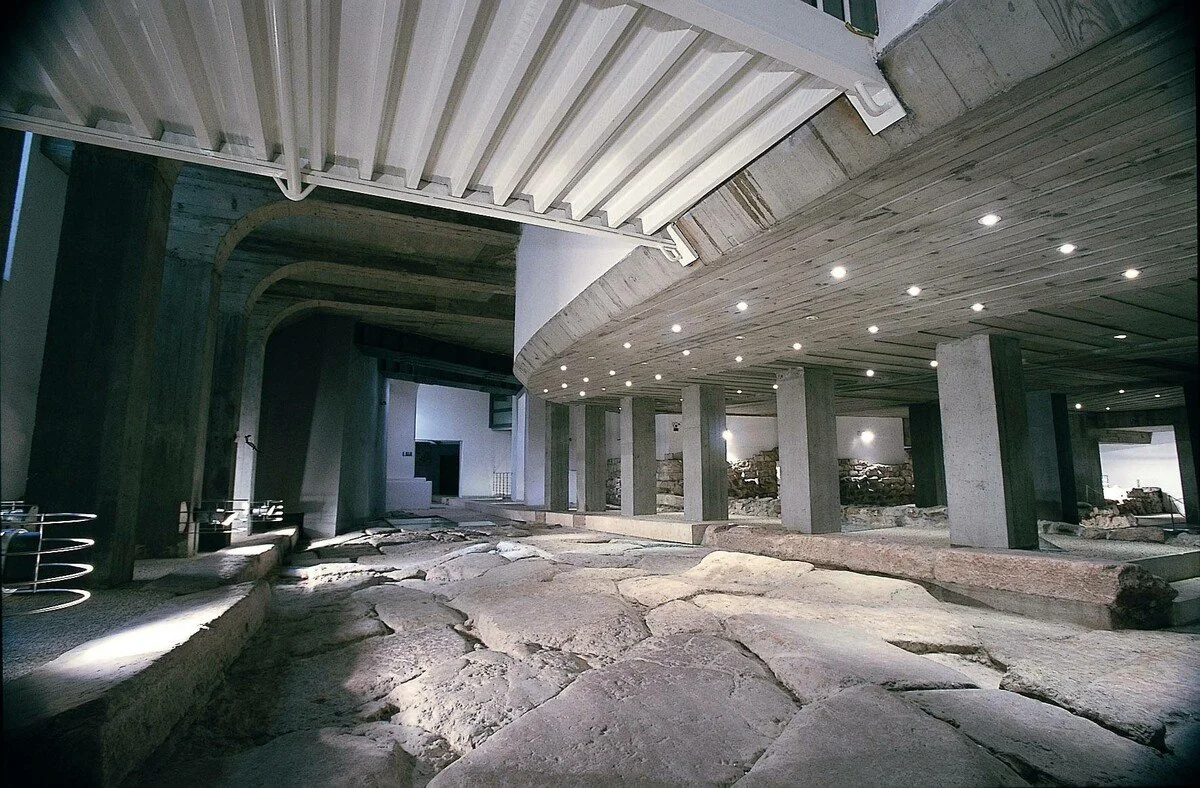ARCHAEOLOGICAL SITES
Fascinating archaeological sites filled with incredibly rich history.



-

San Vigilio Cathedral
Saint Vigilio’s Cathedral, in Trento, was built in an area of the city where once stood an ancient church that had been built in honor of the patron saint of the city. Saint Vigil’s cathedral was almost entirely demolished in 1212 to be rebuilt in Lombard Romanesque style. Towards the end of the thirteenth century, the cathedral was decorated with the addition of a rose window called “the Wheel of Fortune”. A century later, expansion works were carried out and Gothic elements were added to the cathedral.
-

Fiave' pile-dwelling site
The archaeological site dates back to 2300 B.C.. Thanks to excavations and extensive research that began in the 60s and are still ongoing, it has been possible to gather information about the history of the village. The village is believed to have been abandoned due to a devastating fire and to have been subsequently rebuilt, just a hundred metres away, on the Gustunacci hill.
-

Monte Calvario Archeological site
A site of archaeological interest that is unique in the world, it is a place where you can see Roman Ruins in an Alpine territory. The exclusivity of the site is linked to the fact that it combines Romanesque elements with those typical of the Venetian tradition, giving us chapters of history, relating to a chronological span that extends from the first century BC to the fifth century AD. The ruins provide evidence of the existence of pre-Roman and Roman activities and culture in the area. Research carried out in the area has made it possible to have an insight into population flows dating back to different historical periods.
-

Roman villa of Orpheus
Located outside the city walls of Tridentum, Villa Romana di Orfeo was built during the first century AD. Emperor Claudius described Trento as a splendid municipium in 46 AD, as the city was experiencing a most flourishing phase. The prestigious house stood in a wealthy neighborhood, as witnessed by numerous other finds in the area. It is close to the walls of the city, not far from one of its gates. The Villa is a magnificent example of a stately residence, which takes its name from the large polychrome mosaic that can be admired in the reception room. It is a mosaic carpet floor of 56 square meters. The mosaic depicts Orpheus sitting on a rock and playing the lyre to enchant the animals with his music.
-

Sass Archeological space
In the SASS underground archaeological area of Trento, it is possible to visit more than 1,700 square meters of Roman ruins which were unearthed during the excavations carried out to restore and expand the “Teatro Sociale”.
The ancient ruins are what remains of the old Roman city of Tridentum, or the "splendidum municipium", as Emperor Claudius described it. They date back to more than 2000 years ago when the city was founded. The history of the city is witnessed by the architectural styles that characterise its buildings. In the area there are buildings from different periods, such as the Roman ruins, the Medieval quarters, the Renaissance palace, the nineteenth-century theater and also contemporary buildings.
-

Aquileia Archeological site
Aquileia was an important city of the Roman Empire. It is one of the most important archaeological sites in northern Italy and it was declared a UNESCO World Heritage Sites in 1998. The city is characterised by the classical style of ancient Roman architecture. It is possible to visit other parts of the ancient Roman city such as the macellum, the baths, the mausoleum, the residential complexes, the defensive walls, the Roman burial ground, the circus and the amphitheater. Excavations near the river Natizza have unearthed the ruins of an ancient port, warehouses and docks. The Patriarchal Basilica, which dates back to the year 1000, is another important place in Aquileia. It is situated in the city centre next to the Baptistery. Its mosaics, which date back to the fourth century, are a rare example of religious architecture.
